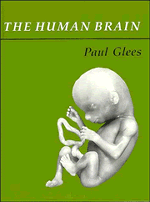Book contents
- Frontmatter
- Contents
- Preface
- 1 Introduction to brain research
- 2 Evolution of the nervous system
- 3 Fine structure of the nervous system
- 4 The nature and transmission of the nervous impulse
- 5 Glia, cerebral blood vessels and neurons
- 6 Cerebral blood and cerebrospinal fluid systems
- 7 The cerebral hemispheres
- 8 The spinal cord
- 9 The brainstem and cerebellum
- 10 The hypothalamus and the autonomic nervous system
- 11 Olfaction and taste
- 12 The auditory system
- 13 Vision and visual pathways
- 14 Touch, pain and proprioception
- References
- Index
3 - Fine structure of the nervous system
Published online by Cambridge University Press: 31 October 2009
- Frontmatter
- Contents
- Preface
- 1 Introduction to brain research
- 2 Evolution of the nervous system
- 3 Fine structure of the nervous system
- 4 The nature and transmission of the nervous impulse
- 5 Glia, cerebral blood vessels and neurons
- 6 Cerebral blood and cerebrospinal fluid systems
- 7 The cerebral hemispheres
- 8 The spinal cord
- 9 The brainstem and cerebellum
- 10 The hypothalamus and the autonomic nervous system
- 11 Olfaction and taste
- 12 The auditory system
- 13 Vision and visual pathways
- 14 Touch, pain and proprioception
- References
- Index
Summary
The macroscopic structures of the brain were described by the anatomists of Ancient Greece and Rome and were given names taken from the world of plants and animals, such as arbor vitae (tree of life), hippocampus (seahorse) and cornus amonis (Amon's horn). The finer structural details, however, became known only with the invention of the microscope and the histological techniques of fixation and staining. This exploratory work started in the eighteenth and nineteenth centuries and the names of Ledermüller (1758), Fontana (1782), Remark (1843) and Newport (1834) have to be mentioned. The main difficulties facing histologists were the gel-like semi-solid consistency of the brain substance and the poor power of resolution of early microscopes. Ledermuller was of the opinion that nerve fibres were hollow tubes in which a special energy circulated to convey willpower to muscles or from sense organs to the ‘sensorium’ of the brain. Fontana, however, proved that the nerve tubes were not empty but were filled with a colloidal substance.
Helmholtz (1821–1894), a famous physiologist of his time, who would nowadays be described as a biophysicist and who wrote his thesis on the composition of nerves (Helmholtz, 1842) under Johannes Müller (1800–1858), a physiologist and embryologist, found that the droplet-like structure of nerves postulated by van Leeuwenhoek in the seventeenth century was wrong and was caused when nerves were observed in hypotonic media.
Cellular construction
The thesis which Helmholtz wrote was of great significance for future studies, for he showed the primary importance of proper fixation for studies of preserved neural tissue.
- Type
- Chapter
- Information
- The Human Brain , pp. 28 - 42Publisher: Cambridge University PressPrint publication year: 1988



